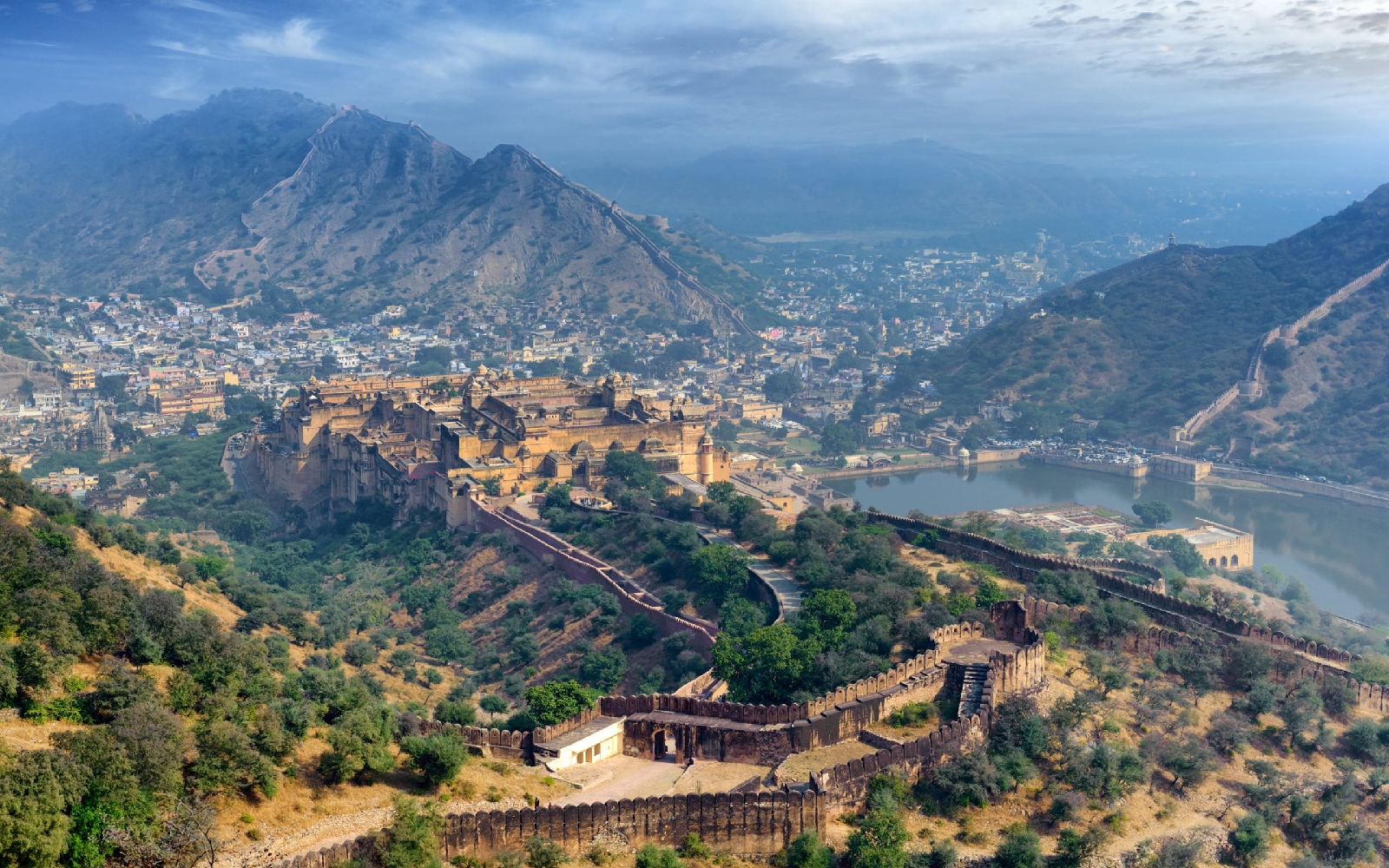Title: Exploring the Magnificence: Top Forts in India
Introduction:
India, with its rich history and cultural heritage, is adorned with magnificent forts that stand as timeless witnesses to the country's glorious past. These architectural marvels showcase the grandeur, strategic prowess, and artistic finesse of the empires that once ruled the land. In this blog, we take you on a virtual journey to explore some of the top forts in India, delving into their historical significance, architectural brilliance, and captivating stories.
1. Amber Fort, Rajasthan:
Located in Jaipur, the Pink City of Rajasthan, the Amber Fort is a majestic blend of Hindu and Mughal architectural styles. Built with red sandstone and marble, this UNESCO World Heritage Site features intricate carvings, sprawling courtyards, and stunning palaces like the Sheesh Mahal (Mirror Palace). The fort offers panoramic views of the surrounding Aravalli hills, making it a must-visit destination.
2. Mehrangarh Fort, Rajasthan:
Perched atop a rocky hill in Jodhpur, the Mehrangarh Fort is an imposing structure that dominates the city skyline. With its massive walls, intricate latticework, and ornate palaces, the fort is a testament to the architectural brilliance of the Rajput era. The museum inside the fort displays a fascinating collection of artifacts, including royal palanquins, armor, and musical instruments.
3. Red Fort, Delhi:
The Red Fort in Delhi, a UNESCO World Heritage Site, is an iconic symbol of India's rich history. Constructed by the Mughal emperor Shah Jahan, the fort's red sandstone walls encompass elegant palaces, manicured gardens, and the famous Diwan-i-Khas (Hall of Private Audiences) and Diwan-i-Am (Hall of Public Audiences). The fort is particularly renowned for its mesmerizing light and sound show.
4. Agra Fort, Uttar Pradesh:
Situated on the banks of the Yamuna River, the Agra Fort is a UNESCO World Heritage Site and a striking example of Mughal architecture. It served as the residence of Mughal emperors, including Shah Jahan, who later built the Taj Mahal. The fort boasts impressive structures like the Jahangiri Mahal, Diwan-i-Am, and the breathtaking Khas Mahal.
5. Golconda Fort, Telangana:
Located in Hyderabad, the Golconda Fort is a splendid citadel that once served as the capital of the Qutb Shahi dynasty. The fort's imposing gates, intricate stonework, and acoustic wonders, such as the Fateh Darwaza (Victory Gate), are notable features. The fort offers panoramic views of the city, and an evening light and sound show takes visitors on a journey through its glorious past.
6. Gwalior Fort, Madhya Pradesh:
Perched on a steep hilltop in Gwalior, Madhya Pradesh, the Gwalior Fort is a magnificent structure that has witnessed several centuries of history. The fort showcases a blend of Hindu, Muslim, and Jain architectural influences and houses noteworthy structures like the Man Singh Palace, Gujari Mahal, and the iconic Teli Ka Mandir.
7. Jaisalmer Fort, Rajasthan:
Rising like a golden mirage from the Thar Desert, the Jaisalmer Fort is a living fort and a UNESCO World Heritage Site. Made entirely of yellow sandstone, it blends seamlessly with its surroundings. Inside the fort, one can explore intricately carved havelis (mansions), Jain temples, and narrow lanes filled with vibrant shops and bustling markets.
8. Chittorgarh Fort, Rajasthan:
Perched atop a hill in Chittorgarh, Rajasthan, the Chittorgarh Fort is the largest fort in India and a UNESCO World Heritage Site. Steeped in legends and tales of valor, this fort witnessed many battles and acts of sacrifice. It houses magnificent structures like the Vijay Stambh (Tower of Victory), Kirti Stambh (Tower of Fame), and the revered Rana Kumbha Palace.
9. Kangra Fort, Himachal Pradesh:
Situated in Kangra, Himachal Pradesh, the Kangra Fort is one of the oldest forts in India. Nestled amidst the Dhauladhar Range, it offers panoramic views of the surrounding valley. The fort showcases a blend of Rajput and Mughal architectural styles and houses temples, palaces, and royal chambers. It is also known for its museum displaying ancient artifacts.
10. Jhansi Fort, Uttar Pradesh:
The Jhansi Fort, located in the city of Jhansi, Uttar Pradesh, holds great historical significance. It was the stronghold of Rani Lakshmibai, one of India's brave freedom fighters during the 1857 uprising against British rule. The fort's architecture reflects a fusion of Rajput and Maratha styles, and it houses museums and galleries depicting the life and struggles of Rani Lakshmibai.
11. Sindhudurg Fort, Maharashtra:
Situated on an island off the coast of Malvan in Maharashtra, the Sindhudurg Fort is a remarkable maritime fort constructed by the Maratha warrior king, Chhatrapati Shivaji. Built using locally available laterite stones, it showcases strategic design elements and fortified walls. The fort offers a glimpse into the maritime history of the region and offers picturesque views of the Arabian Sea.
12. Junagarh Fort, Rajasthan:
Situated in Bikaner, Rajasthan, the Junagarh Fort is an architectural marvel that showcases a blend of Rajput, Mughal, and Gujarati styles. The fort is adorned with beautiful courtyards, palaces, and intricately decorated balconies. It houses a museum that displays a rich collection of artifacts, including weapons, carpets, and artwork.
13. Fort William, Kolkata:
Fort William, situated on the banks of the Hooghly River in Kolkata, West Bengal, is a massive structure that served as a strategic British stronghold during colonial times. The fort features a unique star-shaped design and houses several military buildings, including a church, barracks, and a museum. It is now the headquarters of the Eastern Command of the Indian Army.
Conclusion:
India's top forts are not just architectural marvels but also repositories of history and legends. They offer a glimpse into the country's glorious past, showcasing the ingenuity, valor, and cultural heritage of different dynasties. From the regal forts of Rajasthan to the formidable structures in other regions, each fort has its unique story to tell, inviting travelers to embark on a captivating journey through time.



Comments
Post a Comment